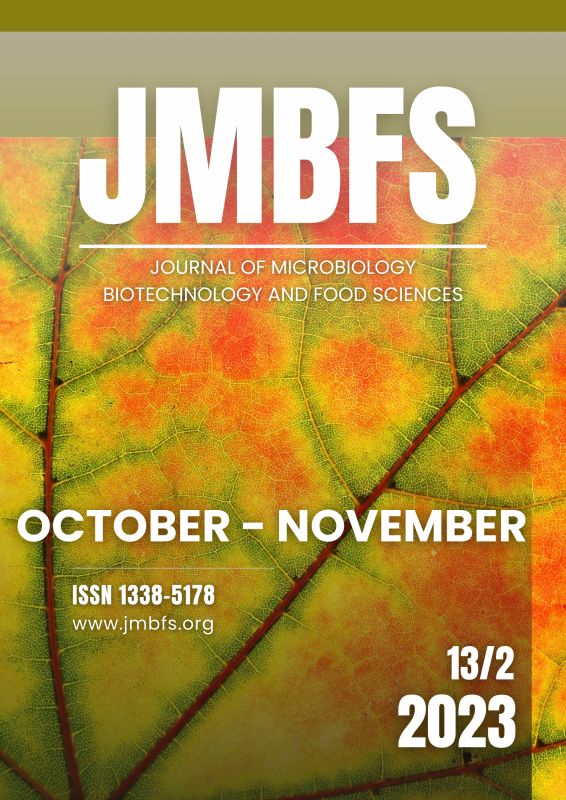ANTIMICROBIAL PIGMENT FROM FUSARIUM GRAMINEARUM: OPTIMIZING CONDITIONS AND UTILIZING AGRO-INDUSTRIAL RESIDUES
DOI:
https://doi.org/10.55251/jmbfs.9757Keywords:
Agro-industrial residues, antimicrobial bio-colorants, F. graminearum, food industry, microbial pigmentsAbstract
Fusarium sp. produces various bioactive pigments widely used in pharmaceuticals, cosmetics, and the food industry. This study investigated the antimicrobial effect of the pigment produced from the highest pigment-producing Fusarium sp. strain and determined the optimum growth conditions and agro-industrial residues to obtain maximum pigment production. Fusarium equiseti, Fusarium graminearum, and Fusarium poae strains were tested in terms of their pigment production levels. Pigment quantification was assessed by a UV–Visible Spectrophotometer at 500 nm. Antimicrobial tests were determined by Disc Diffusion and Well Diffusion Methods. According to our results, the highest amount of pigment-producing strain was F. graminearum (p<0.001) and malt extract broth (MEB) was the optimum growth media (p<0.001). Extracted F. graminearum pigment was antimicrobial against B. cereus and S. aureus with a zone of inhibition diameters of 10.2 and 14.9 mm respectively. Initial pH levels of 8, 150 rpm rotation speed, 30 ºC temperature, and 9 days of incubation under the light condition in MEB media were determined as the optimum growth conditions for the highest reddish pigment production. Moreover, 10-2 times diluted molasses, Turkish feta cheese whey, and Turkish cheddar cheese whey were found as suitable low-cost growth media for reddish pigment production by F. graminearum. Our findings not only represent a pigment that might be used in the food industry as an antimicrobial bio-colorant but also show the potential use of molasses and whey as low-cost growth media for reddish pigment production by F. graminearum.
Downloads
Downloads
Published
How to Cite
Issue
Section
License
Copyright (c) 2022 Tugce Dag, Gulcan Sahal, Isil Seyis Bilkay

This work is licensed under a Creative Commons Attribution 4.0 International License.
All papers published in the Journal of Microbiology, Biotechnology and Food Sciences are published under a CC-BY licence (CC-BY 4.0). Published materials can be shared (copy and redistribute the material in any medium or format) and adapted (remix, transform, and build upon the material for any purpose, even commercially) with specifying the author(s).





